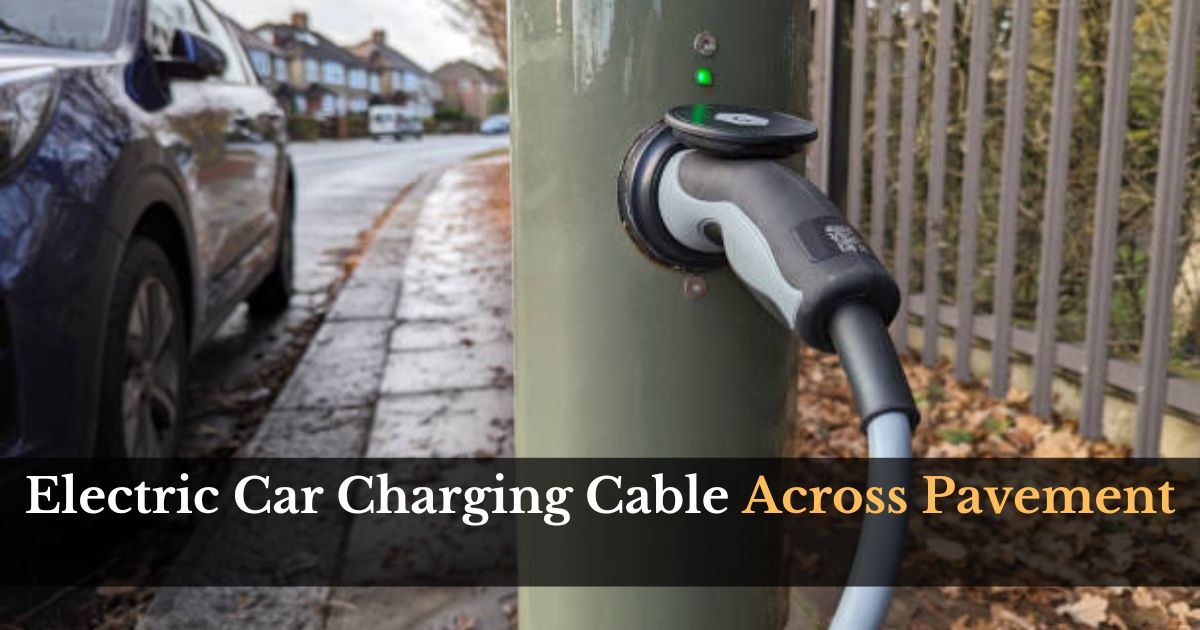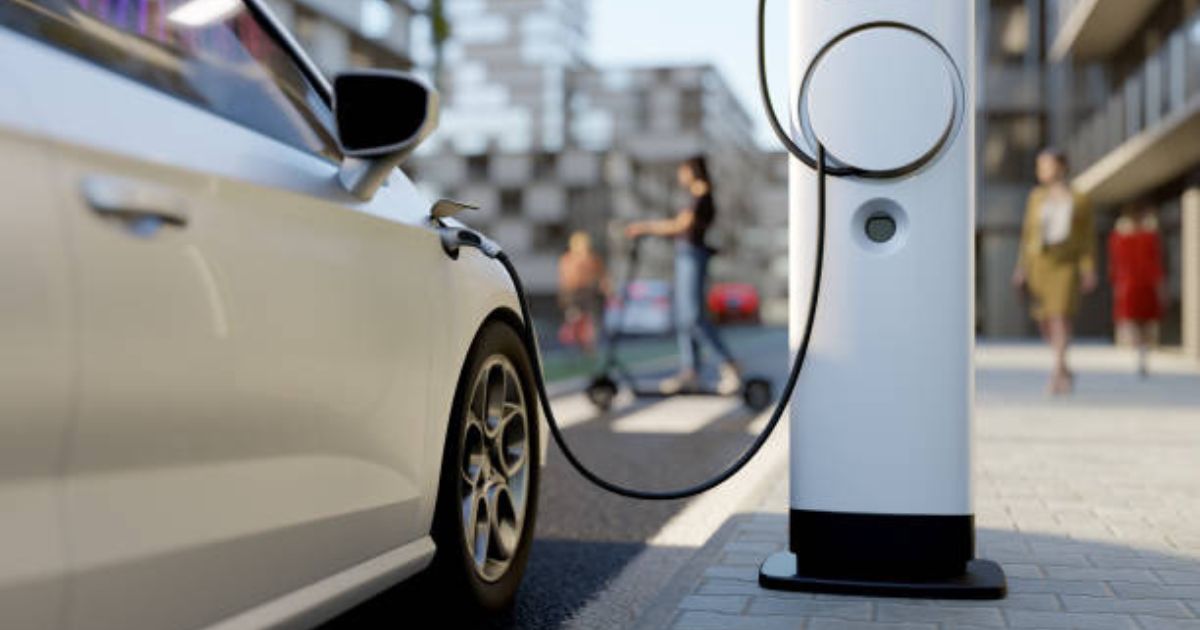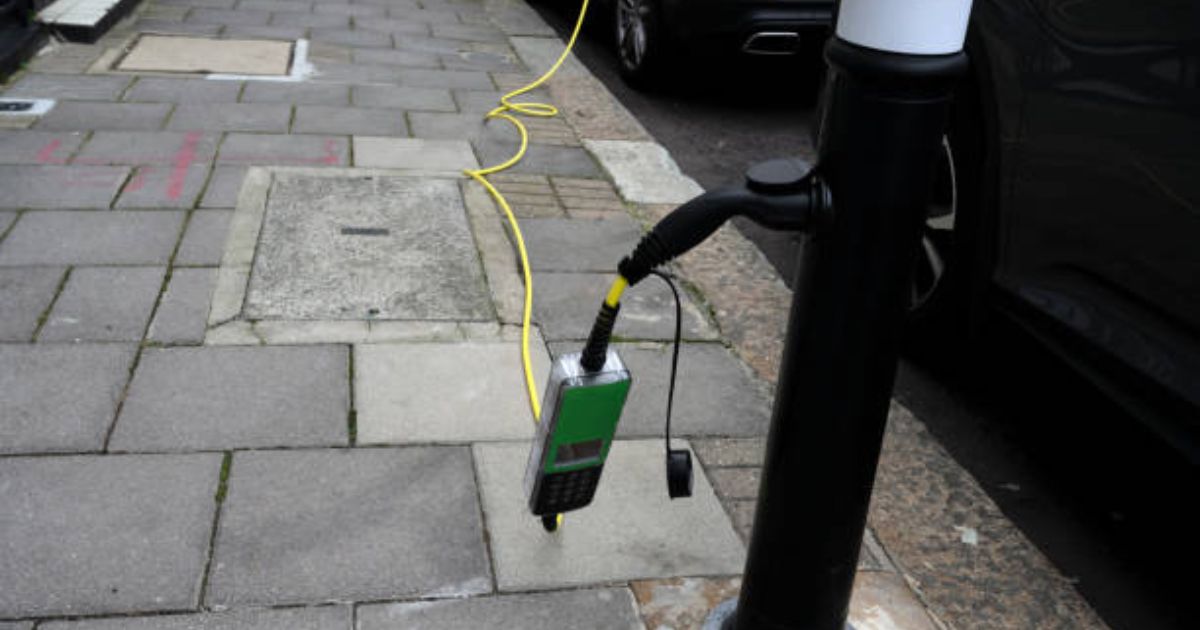Electric car charging cable across pavement, As electric cars become more common, many people are finding new ways to charge them at home. But this often means running charging cables across sidewalks, which can be dangerous for people walking by. This article will help you understand the important things to think about when using an electric car charging cable across a sidewalk and how to do it safely and legally.
Understanding Electric Car Charging Cable Across Pavement: Simplified Explanation
Introduction
Electric cars are becoming more common, and with them comes the need to charge these vehicles. However, a problem that’s starting to crop up more often is the issue of electric car charging cables being laid across pavements. You might have seen it yourself—a cable running from a house to a car parked on the street. This situation raises concerns about safety, convenience, and legal issues.
Understanding Electric Car Charging
Basics of Electric Car Charging
Charging an electric car is similar to filling up a traditional car with gas, but instead, you’re using electricity to power your vehicle. You can charge your electric car at a public charging station or right at home using a cable that connects the car to a power source.
Types of Electric Car Charging Cables
There are different types of cables used for charging electric cars. Some are designed for high-speed charging at public stations, while others are for slower, overnight charging at home. Each type has a specific plug and power rating, but all are meant to transfer electricity safely and efficiently to the car’s battery.
Charging Stations vs. Home Charging
Public charging stations are popping up everywhere, from shopping malls to office buildings. They are convenient but can be expensive if used frequently. Home charging is more cost-effective and allows you to charge your car overnight, but it requires the proper setup and can lead to issues with cables running across pavements.
Common Problems with Charging Cables on Pavements
Tripping Hazards
One of the biggest concerns with charging cables across pavements is the risk of tripping. Pedestrians, especially those who are elderly or have vision impairments, can easily trip over a cable that’s not properly managed.
Accessibility Issues
Charging cables can block the way for people using wheelchairs, strollers, or those with mobility challenges. This makes it hard for them to navigate sidewalks safely and independently.
Legal and Regulatory Concerns
In many places, there are laws and regulations about what can and cannot be placed on public sidewalks. Laying a charging cable across a pavement might violate local ordinances and result in fines or other penalties.
Safety Concerns
Risks to Pedestrians
Pedestrians can be injured if they trip over a cable. Additionally, if the cable is not designed for outdoor use, it could deteriorate and become a more significant hazard over time.
Weather-related Hazards
Rain, snow, and ice can make an exposed charging cable slippery or cause it to wear out faster. In some cases, moisture can get into the connectors, leading to electrical hazards.
Potential for Damage to the Cable
Cables that are left out in the open can be damaged by people walking over them, pets chewing on them, or cars driving over them. This damage can reduce the efficiency of the charging or even create safety hazards.
Electric Car Charging Cable Across Pavement
| Feature | Description |
| Can I run a cable across the pavement? |
Not recommended. It creates a trip hazard and may violate local regulations.
|
| Safer alternatives |
Consider a dedicated home charging station or a retractable charging post.
|
| Types of EV charging cables (for Level 2 charging) |
– SAE J1772 (most common in USA)
|
| Common problems |
– Damage from running over by car
|
|
– Wear and tear from weather exposure
|
|
|
– Cuts or fraying of the cable
|
|
| Price |
$100 – $300 depending on length and features
|
| Repair |
Not recommended due to safety concerns. Replace the cable if damaged.
|
Legal and Regulatory Aspects
Local Regulations and Laws
Different areas have different rules about electric car charging cables. In some cities, you might need a permit to run a cable across a pavement. Others might have strict no-obstruction laws that make it illegal to place anything on the sidewalk.
Responsibilities of Electric Car Owners
As an electric car owner, it’s your job to make sure your charging setup is safe and legal. This means knowing the rules in your area and finding ways to charge your car without causing problems for your neighbors or pedestrians.
Penalties for Improper Cable Placement
If you place a cable across a pavement without following the proper guidelines, you could face fines or other penalties. It’s important to understand these rules to avoid getting into trouble.
Solutions for Managing Charging Cables
Proper Cable Management
One of the good ways to avoid problems is to manage your cable properly. Use clips or hooks to keep the cable off the ground and out of the way of foot traffic.
Using Cable Covers
Cable covers are designed to protect your charging cable and prevent people from tripping over it. They’re usually made of durable materials and can be placed over the cable where it crosses the pavement.
Innovative Charging Solutions
New solutions are being developed to make charging easier and safer. These include retractable cables, built-in pavement channels, or even wireless charging systems that don’t require a physical connection.
Practical Tips for Electric Car Owners
Good Practices for Charging at Home
When charging at home, make sure your setup is safe and efficient. Use a designated charging spot that’s close to an outlet, and avoid running cables across public spaces whenever possible.
Community Considerations
Be mindful of your neighbors and the community. Make sure your charging cable doesn’t block sidewalks or create hazards for others.
Keeping Pedestrians Safe
Always place safety first. Use signs, barriers, or other indicators to alert people to the presence of your charging cable if it must cross a sidewalk.
Future of Electric Car Charging
Emerging Technologies
The future of electric car charging is bright, with new technologies emerging all the time. These include faster charging stations, more efficient batteries, and systems that can integrate with renewable energy sources.
Smart Charging Systems
Smart charging systems can help manage when and how your car charges, optimizing for the good times and lowest costs. These systems can be controlled through apps and can adjust to the needs of the power grid.
Wireless Charging
Wireless charging is one of the most exciting developments. This technology allows cars to charge without a cable, using magnetic fields to transfer electricity. It could eliminate many of the problems associated with traditional cables.
In summary, while electric car charging cables running across pavements can be a convenient solution for some, they pose various risks and challenges that need to be addressed. From safety hazards to legal issues, it’s essential to manage these cables properly to ensure the safety and convenience of everyone. With the right solutions and a bit of foresight, electric car owners can charge their vehicles without creating problems for others.
FAQs
What should I do if I see a charging cable across the pavement?
If you encounter a charging cable across the pavement, try to avoid tripping over it. You might also consider reporting it to the local authorities if it poses a significant hazard.
Are there legal penalties for improperly placed charging cables?
Yes, there can be legal penalties, including fines, for placing charging cables improperly. It’s important to check your local regulations to avoid any issues.
How can I safely charge my electric car at home?
To safely charge your electric car at home, use a designated spot close to your power source, keep cables off the ground, and follow all local safety guidelines.
What innovations are coming in electric car charging?
Innovations include wireless charging, smart charging systems, and faster, more efficient public charging stations that integrate with renewable energy.
Can I use an extension cord for my electric car charger?
Using an extension cord for your electric car charger is generally not recommended because it can lead to safety hazards and inefficient charging. It’s good to use the proper charging cable and equipment designed for your car.





